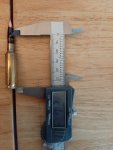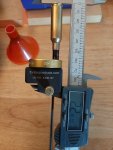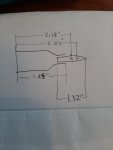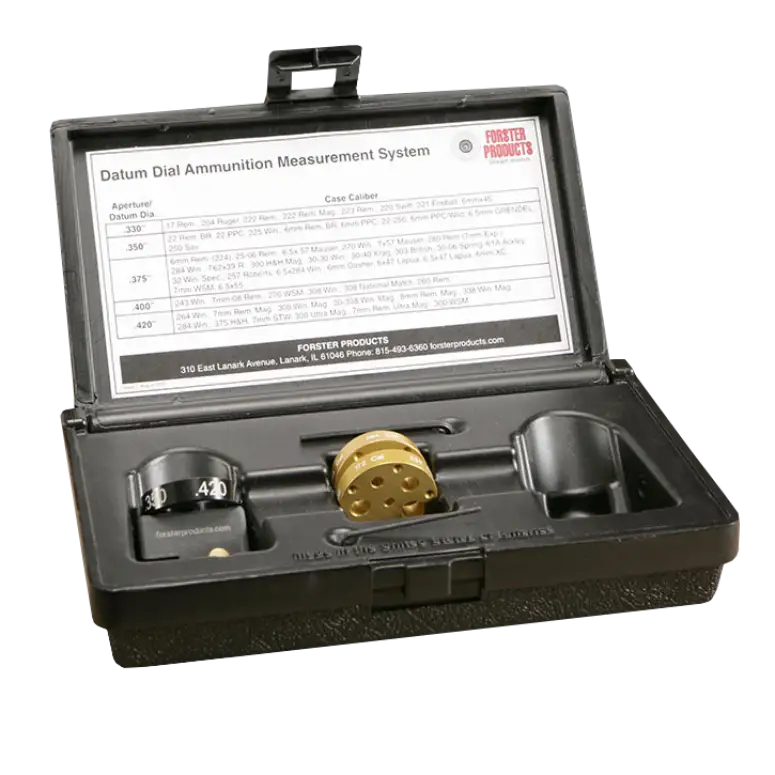Hi, tried a bunch of ways to figure out distance to lands. This is for a 6.5x47 Lapua and a Berger 130 VLD Target projectile.
For reference a standard C.O.A.L. is listed as 2.8 inch for what ever that’s worth.
I attempted countless times with the OAL gauge but got widely varying values, this despite reading tutorials and viewing videos etc.
I couldn’t figure out how to dissemble my Sig SSG3000 bolt to remove the extractor so couldn’t really try the naked bolt in receiver technique, though it seemed like a great way to go. The bolt looks a lot different than the Remington type bolts i often see.
I then read about using a fire formed case and coating the projectile with a marker. In so doing i very slowly closed the bolt and it sure left a rim of uniform marks in the color coating which was very promising.
I then measured the distance from the base to the mark. This measured 2.18 inch.
I also used a Forster tool to measure case length to datum which yielded 2.24 inch.
The case length itself is 1.85 inch.
Length of projectile is 1.32 inch.
Not sure how to proceed? I'd sure appreciate any help.
Should i have just measured the C.O.A.L. of the marked projectile in the fire formed case and used that as the maximum length and subtract .01 inch to allow an appropriate jump? (of course i didn't do that...i already took that set up apart but i guess i can do that again).
Thanks.
For reference a standard C.O.A.L. is listed as 2.8 inch for what ever that’s worth.
I attempted countless times with the OAL gauge but got widely varying values, this despite reading tutorials and viewing videos etc.
I couldn’t figure out how to dissemble my Sig SSG3000 bolt to remove the extractor so couldn’t really try the naked bolt in receiver technique, though it seemed like a great way to go. The bolt looks a lot different than the Remington type bolts i often see.
I then read about using a fire formed case and coating the projectile with a marker. In so doing i very slowly closed the bolt and it sure left a rim of uniform marks in the color coating which was very promising.
I then measured the distance from the base to the mark. This measured 2.18 inch.
I also used a Forster tool to measure case length to datum which yielded 2.24 inch.
The case length itself is 1.85 inch.
Length of projectile is 1.32 inch.
Not sure how to proceed? I'd sure appreciate any help.
Should i have just measured the C.O.A.L. of the marked projectile in the fire formed case and used that as the maximum length and subtract .01 inch to allow an appropriate jump? (of course i didn't do that...i already took that set up apart but i guess i can do that again).
Thanks.
Attachments
Last edited:





